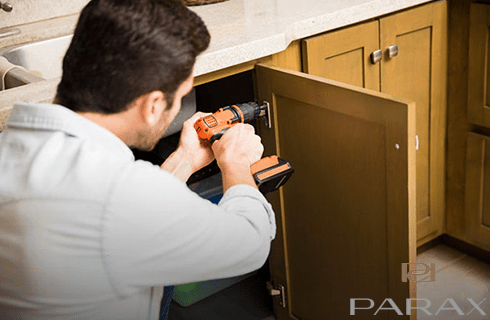Tools needed to repair kitchen cabinets at home:
In general, repairing kitchen cabinets requires tools and materials to make the work process run smoothly. Obviously, different tools are needed to repair different problems. We have listed here all the accessories that can be used to repair cabinets at home. Including:
• Soft fabric
• Plastic putty knife
• Wood repair markers
• screw driver
• Magnetic cabinet clamp
• Glue stick
• Paper plate
• Toothpick
• carpet knife
• Drill
• Flat bar
• Brush
• Fine sandpaper
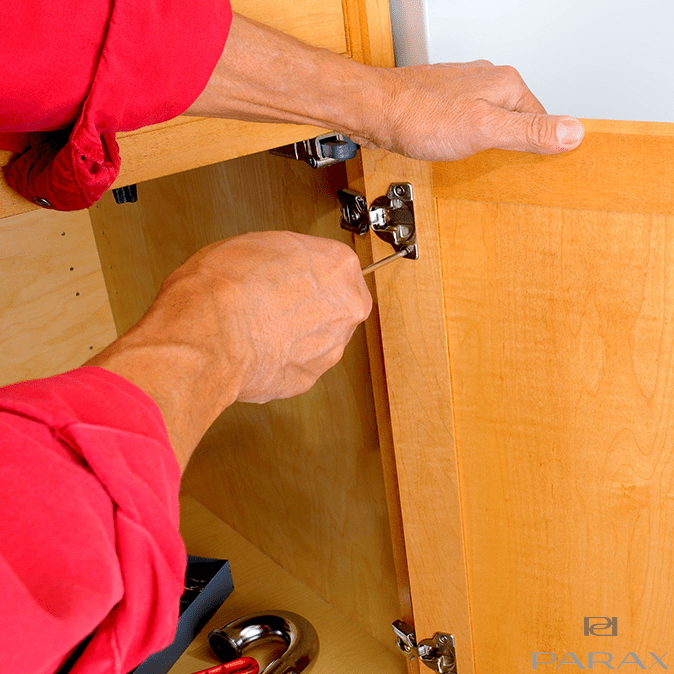
You can do these 4 kitchen cabinet repairs at home:
Kitchen cabinet repair /Slits, scratches and small holes
Scratches on kitchen cabinets usually do not need to be painted or stained and are so simple that you can make it look like the first day with the least cost. All you have to do is buy a wood repair marker that matches the color of your cabinet. Of course, some cabinet makers also put the marker in the pack of purchased goods when selling. This is because there is a possibility of minor bumps during the installation process and scratches. To fill small holes, such as old screw holes or bumps on the front of a door or drawer; You can buy wood fillers available in hardware stores. To do this, rub the wood filler on the hole and then wipe off the excess wax with a soft cloth or a plastic putty knife. If the fabric does not do this, use a marker that harmonizes with the wood surface to gently paint the scratched area to cover minor scratches that distort the work surface.
Do not forget to wipe off excess marker ink with a soft cloth before drying. If you do not know the name of your cabinet cover, get a set of wood repair markers from the store. If no color matches the surface of the cabinet perfectly, some of them can be combined to achieve a close color matching. Start with a lighter color than the cabinet color and then cover the darker markers until the scratches are no longer visible. First test the markers in an inconspicuous area to ensure close color matching.
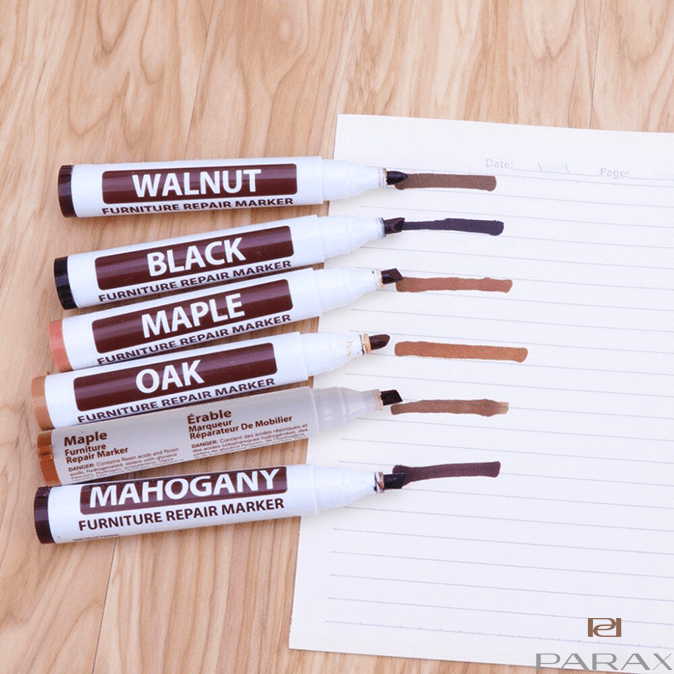
Kitchen cabinet repair/ Do not close the cabinet
If the cabinet does not close or does not close, the problem should be looked for in the hinges. Check the hinges. One of them may be loose or the zinc may not be in the flat cabinet. In most cases, loose hinges are caused by loosening one or two screws. To repair, hold the door tightly and tighten the screws with a normal screwdriver; Not with cordless drill! Because tightening by hand allows you to tighten the screw enough. It also prevents the screw head from tightening or detaching too much.
If the doors and hinges look good but the doors open automatically after closing, the problem is probably due to the swinging of the door or cabinet box. To repair it may be necessary to add a magnetic clamp to keep it closed. Magnetic clamp is an inexpensive device that includes a magnet base, screws and impact plate. Install the clamp under a shelf or under the cabinet so that the magnet is flush with the front of the cabinet and almost touches the cabinet near the top or bottom corner. The impact plate, which is a flat piece of metal, attaches to the cabinet door to strike the magnet as soon as the cabinet is closed. It should be noted that magnetic clamps are different in shape and size, so when buying, be careful to choose the clamp that fits your cabinet.

Kitchen cabinet repair/ Damaged screw holes
If the screws and hinges rotate in place when you try to tighten the hinge screws, your cabinet repair project is simply about filling and possibly re-drilling the holes. This problem is more common for cabinets that are made of MDF and fiber. Because any force that separates the screws from their holes can pull out some wood material. To repair the screws, remove the hinges and the cabinet door and mark each hinge to indicate which position it is in: top, middle or bottom? Some complex hinges may be adjusted differently from other hinges in the same door; So it’s important to put them in the right position.
Pour some wood glue on a piece of paper. Dip one toothpick into the glue so that at least one-third of the toothpick is covered with glue. Insert the end of the glued toothpick into the damaged screw hole. If the hole is large, repeat with more toothpicks. Allow the glue to dry completely. Cut the extra toothpicks with a hand knife to level the cabinet. Replace the hinges, screws and cabinet door, and finally insert the screw into the hole. If you can not easily tighten the screws with a screwdriver, first drill the narrow holes to tighten the screws in the best way.
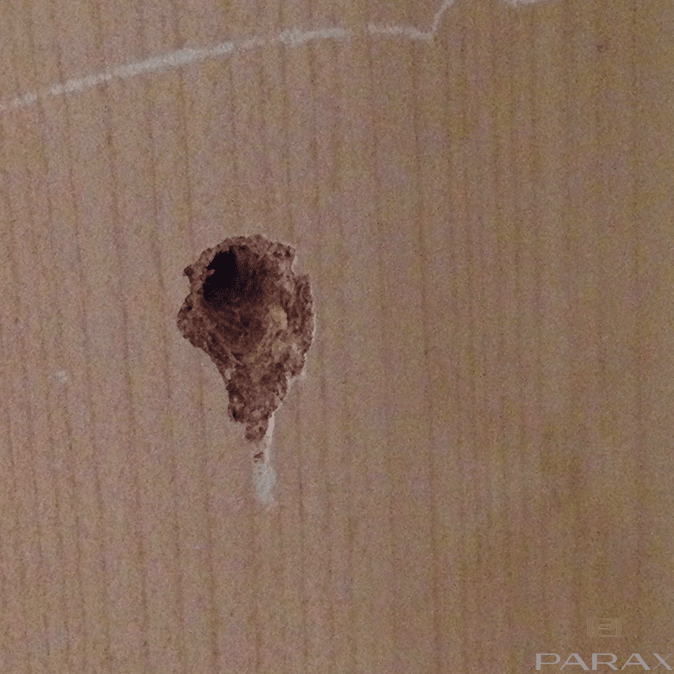
Kitchen cabinet repair/ Improper cabinet doors
Cabinets with hinges attached to the cabinet usually have screws that can be tightened or unscrewed to adjust the door alignment. If your cabinet doors are no longer in the same row as before, but the hinge screws still look tight, the hinges may need adjusting.
For repair, you can specify the initial settings by tightening and loosening the screws and paying attention to the effect on the door level. Look for dimples near the ends of the screws as a sign of the screw settings. For example, if the recess is to the left or right of the screw, adjust the screw to move the door left and right. A groove or recess above or below the head of the screw means that the screw controls the height of the door. In some cases, you will need to unscrew the screws and pull the door further up or down. Tighten the screws after the door is level.
When to look for a cabinet repairman?
Repair of some cabinet defects should be left to its craftsman. for example:
• If a cabinet shelf, drawer box or any of the doors and drawers is swinging.
• If your cabinets are made of fiberboard or MDF and are swollen due to water penetration, an expert can assess whether they can be repaired or need to be replaced.
• If the hinges are damaged and a suitable replacement is not available, contact the manufacturer or the person who installed the hinges.
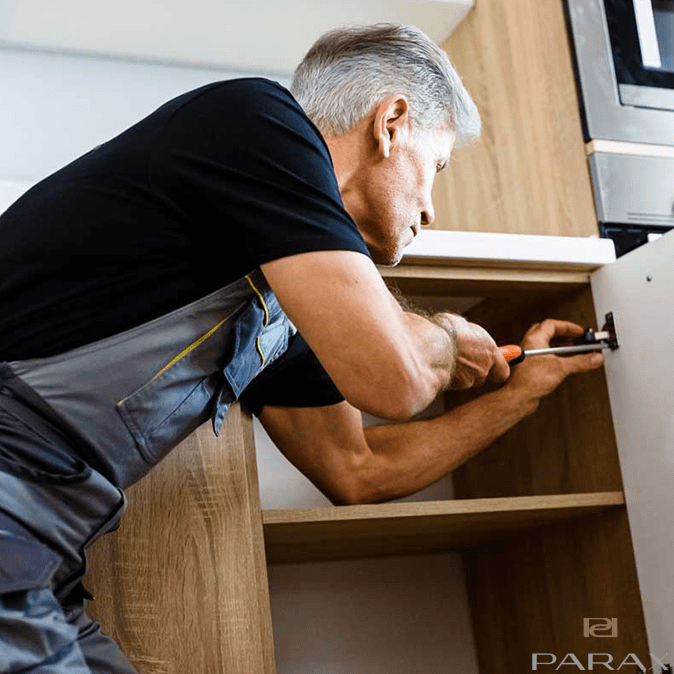
The last word:
In this article, we tried to examine those cabinet defects that can be fixed at home. We hope we have been able to satisfy you by providing these solutions. It should be noted that the quality of raw materials, construction and maintenance have a great impact on the absence of small and large defects in the kitchen cabinets. For example, when cleaning cabinets, it is better to remove the food so that it does not rot. Or prevent water from spilling on PVC cabinets so that the hinges and fittings do not rust.
By using the best foreign raw materials, using the latest devices, benefiting from the expertise of experts and expert designers, Parax team will create a beautiful and quality cabinet for you dear ones. Just be diligent in maintaining it.

